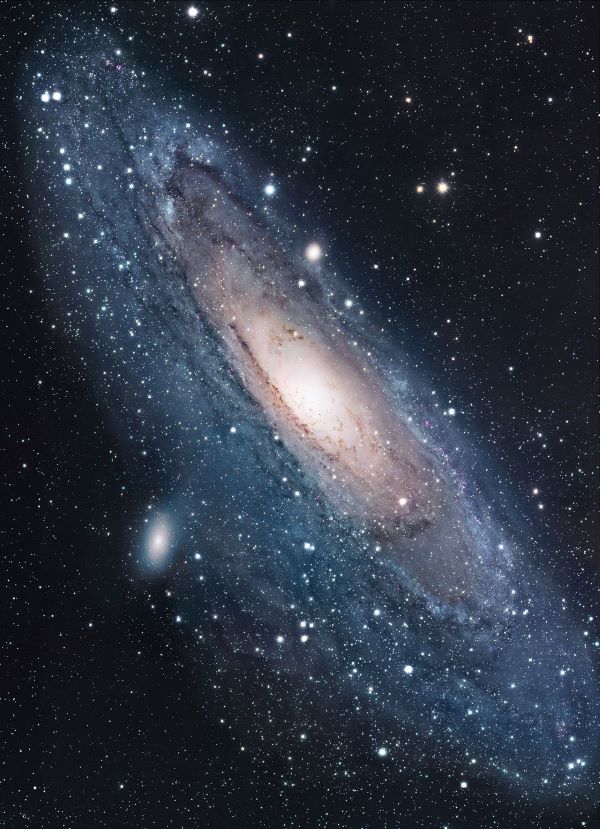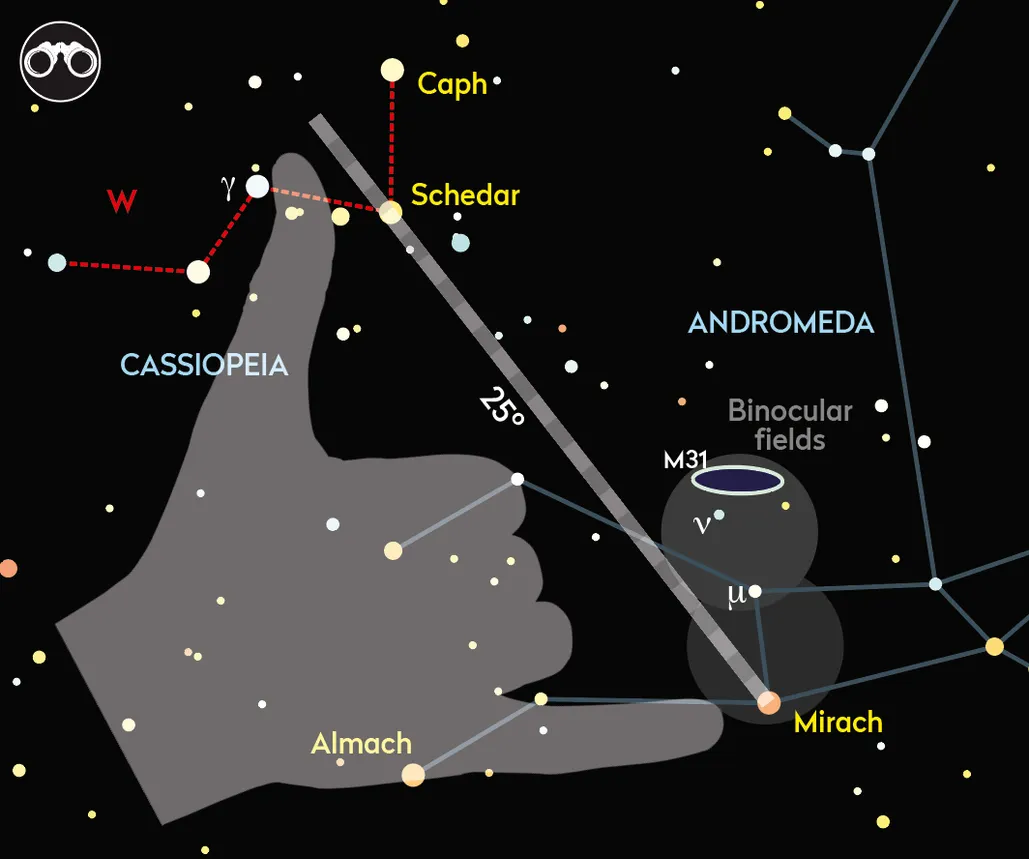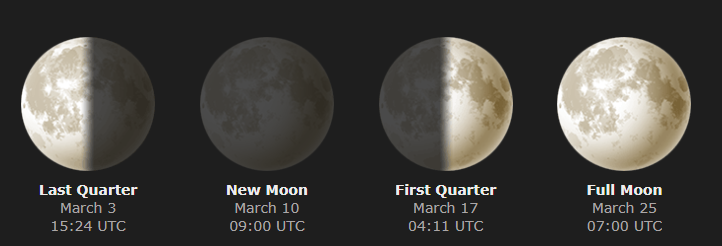This month, I wanted to look at the Milky Way's closest Spiral Galaxy neighbour – M31, the Andromeda Galaxy.
 What are galaxies, how do they form, and are they all the same?
What are galaxies, how do they form, and are they all the same?A galaxy is a massive collection of stars, gasses, and dust – gathered and kept together by gravity. There is no set size for a galaxy. Some can be as small, only containing several hundred million stars; others can be massive – home to trillions of stars. There is also no set shape for a galaxy; they can be irregular, elliptical, banded or spiral in shape like our galaxy (and Andromeda). Many galaxies contain Supermassive black holes at the centre, around which the galaxy rotates.
When Galaxies formed is now at the centre of a heated debate. Established thought suggested that galaxies formed at least 750 million years after the Big Bang, as the heat from the creation of the universe would have been too intense for atoms to form before that. However, following new observations from the James Webb Space Telescope, which had found evidence of galaxy formation just 480 million years after the Big Bang – scientists are now looking again at their models of how the universe began.
The Great Andromeda Nebula.
The Andromeda Galaxy is one of a handful of galaxies visible to the naked eye in dark skies. The others are the Large and Small Magellanic Clouds in the Southern Hemisphere.
It was first documented by a Persian astronomer, Abd al-Rahman al-Sufi, in or around 964 CE and in his Book of Fixed Stars, he referred to it (quite accurately, really) as a "small cloud."
The Galaxy is a banded spiral galaxy of equivalent size to the Milky Way (although it is thought to be slightly more massive than our galaxy.) It is approximately 2.5 million light-years away and sits in the constellation of Andromeda (hence its name). It was initially thought of as a nebula by the Astronomical community. Andromeda was a key discussion piece within the “Great Debate” of 1920, which took place in Washington D.C. between Harlow Shapley, a scientist who believed the Milky Way was the entirety of the universe, and astronomer Heber Curtis, who believed that other galaxies existed external to the Milky Way. It wasn’t until 1925, however, when Edwin Hubble identified extragalactic variable stars within the Andromeda Galaxy using the 100-inch Hooker telescope located at Mount Wilson in Los Angeles. This discovery proved once and for all that the Milky Way was a galaxy (and not the entirety of the universe), and that Andromeda wasn’t a nebula, but rather another galaxy several million lightyears away from our own.
How to find Andromeda in the night sky
Whilst the Andromeda Galaxy is visible via the naked eye under dark skies, it can still be tough to see sometimes, especially from more urban areas where light pollution can be a significant problem.
The first thing to do is to locate one of the most recognisable constellations in the night sky, the “W” of Cassiopeia. Hold up your hand and place your thumb in the middle of the “W” (the star is called Gamma Cassiopeiae or Navi), as if giving the constellation a thumbs up.
Then, stretch your pinkie finger towards the bright orange star Mirach in the Andromeda Constellation (down and to the right of Cassiopeia).
Follow an imaginary line out from your folded middle finger, and up from Mirach – there should be a slight smudge visible to you. That will be the Andromeda Galaxy.
Here’s an image from the BBC Sky at Night website to help you.

The best way to boost seeing the Andromeda galaxy is through a telescope or binoculars. However, you can use a technique called “Averted Vision”, which I covered in February’s edition of Stellar Cartography. The best time to observe in the Northern Hemisphere is the autumn skies of October and November.
Collision Course
The blue shift light of the Andromeda Galaxy confirms to us that the galaxy is heading towards us. Scientists estimate that it travels about 68 miles per second and will likely begin to collide with the Milky Way in about 2.5 billion years. This collision will likely result in the formation of a large elliptical galaxy. Whilst small, there is also a risk that our solar system could be ejected from the Milky Way – although, by the time the merger is complete, the Sun would likely have destroyed itself and turned into a white dwarf within a planetary nebula.
The Andromeda Galaxy in Science Fiction
The TV series Andromeda, created by Gene Roddenberry, developed by Robert Hewitt Wolfe, and produced by Roddenberry's wife, Majel Barrett, is set in the Milky Way, Andromeda, and Triangulum Galaxies.
Star Trek: Odyssey, a online fan-produced web series which sees the USS Odyssey use new Slipstream technology to compete a dangerous mission in the Andromeda Galaxy to stop the Archein’s invasion of the Milky Way.
Subnautica, an aquatic base building, world exploration and adventure video game developed and published by Unknown Worlds Entertainment, is set on the planet 4546B in the Andromeda Galaxy. Players must survive on the ocean world having been stranded alone following a catastrophic explosion of their spacecraft called the Aurora.
The Moon
Here are the Moon’s phases during February, along with the dates.
• Last Quarter – 3rd March 2024
• New Moon – 10th March 2024
• First Quarter – 17th March 2024
• Full Moon – 25th March 2024

March’s full moon is commonly called the Full Worm Moon. This is because of the earthworms that wriggle out of the ground as the earth begins to thaw in March.
Thanks to MoonGiant for this information, read more about the March moon phases on their website.
Mercury
From March 17 through March 25, you might be able to catch a glimpse of the planet Mercury deep within the glow of the western horizon, around 40 minutes after sunset within the constellation of Pisces the fish.
Venus
On the morning of March 8, look for the thin crescent Moon about 30 to 40 minutes before sunrise on the southeastern horizon. You should get a good glimpse of bright Venus to the left and above the Moon. You should also be able to see much dimmer Mars just above the Moon also.
Mars
He’s back! Mars makes a gentle and subdued return to our morning skies in March, with a good opportunity to catch sight of the red planet on the morning of 8th March, following the instructions above for Venus.
Jupiter
Early March is the best period to catch good views of Jupiter. At a bright magnitude of –2.2, look for the king of the planets in the constellation of Aries in the Western sky.
Saturn
Saturn begins its transition into becoming a morning planet. Low to the horizon at Sunrise, the glare of the Sun will make it hard to spot. I suggest giving Saturn a miss this month.
Uranus
Uranus shines at magnitude 5.8 so you will need binoculars. At the end of March Uranus can be found close to (slightly south of) the star Botein in the constellation of Aries. You can use the Pleiades which are about 10 degrees up and to the left of the star to help you find the planet.
Neptune
Neptune reaches conjunction with the Sun on the 17th and is not visible this month.
Next Month’s Preview
I will take a look at some of the best constellations to see during Spring in the Northern Hemisphere including Ursa Major, Boötes, and Leo.
What did you think of this edition of UFP Stellar Cartography? Let us know in the comments below.
WRITTEN BY WoorLord
EDITED BY WoorLord
IMAGES SOURCED FROM Hubblesite.org -BBC - MoonGiant.com



 I'll perhaps invest in a bit of astrophotography equipment if I can.
I'll perhaps invest in a bit of astrophotography equipment if I can.


Back in November I took the worst picture of Andromeda ever, by hand with my tinkered smartphone camera through my telescope #ShakyShaky
Fortunately, I did better 3D render of the Andromeda Ascendant